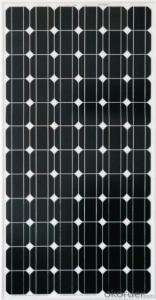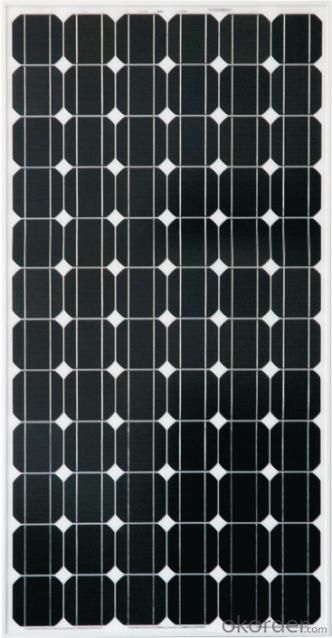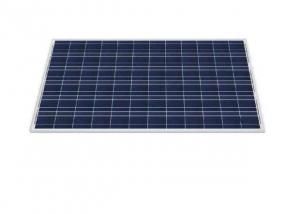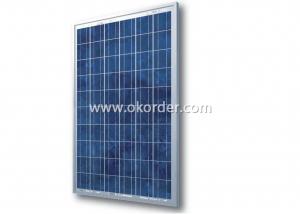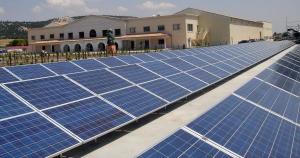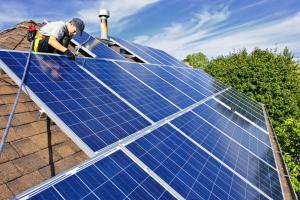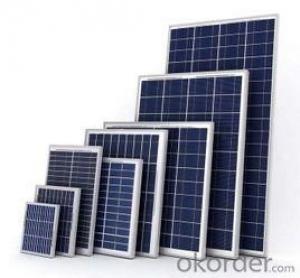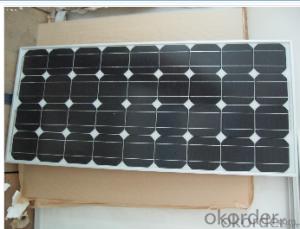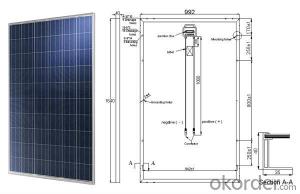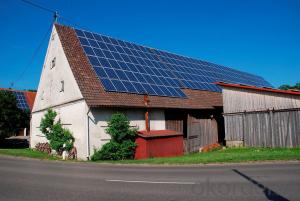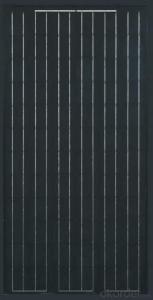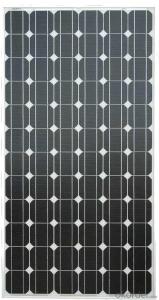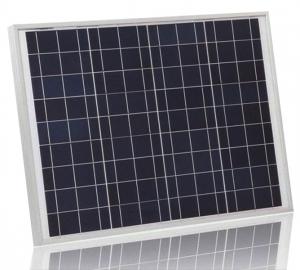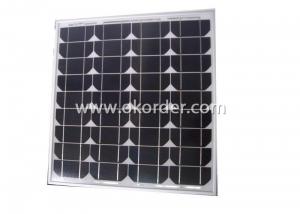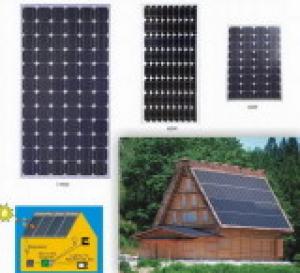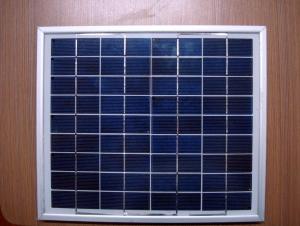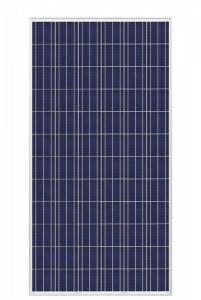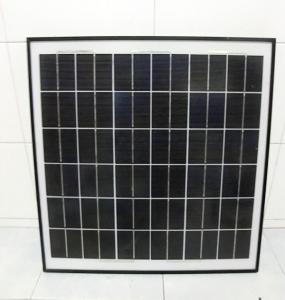Q-Cells Solar Panels Mono 200W Monocrystalline Solar Module
- Loading Port:
- China Main Port
- Payment Terms:
- TT OR LC
- Min Order Qty:
- -
- Supply Capability:
- -
OKorder Service Pledge
OKorder Financial Service
You Might Also Like
Solar Monocrystalline (210W-225W)
Introduction of Solar Monocrystalline (210W-225W)
Solar modules use light energy (photons) from the sun to generate electricity through the photovoltaic effect. The majority of modules use wafer-based crystalline silicon cells or thin-film cells based on cadmium telluride or silicon. The structural (load carrying) member of a module can either be the top layer or the back layer. Cells must also be protected from mechanical damage and moisture. Most solar modules are rigid, but semi-flexible ones are available, based on thin-film cells. These early solar modules were first used in space in 1958.
CNBM Solar photovoltaic (PV) Panel is designed for large electrical power requirements. It is the optimal choice for both on-grid and off-grid power systems. CNBM Solar panel offers high performance of power per square foot of solar array. Monocrystalline silicon(c-Si): often made using the Czochralski process. Single-crystal wafer cells tend to be expensive, and because they are cut from cylindrical ingots, do not completely cover a square solar cell module without a substantial waste of refined silicon. Hence most c-Si panels have uncovered gaps at the four corners of the cells.
Characteristics of Solar Monocrystalline (210W-225W)
I. Solar Cell : High efficiency crystalline solar cell. Even if under the weak light, the solar module can produce maximum power output.
II. Tempered glass (toughened glass): Anti-reflecting coating and high transmission rate glass increase the power output and mechanical strength of solar module.
III. EVA and TPT: Using high quality EVA and TPT to prevent destroying and water.
IV. AI frame: Without screw, corner connection. 6 holes on the frame can be installed easily.
V. Junction box: Multi function junction box with water proof.
VI. Long lifetime: ≥25 years; Less power decrease.
VII. Good performance of preventing from atrocious weather such as wind and hails.
VIII. Resisting moisture and etching effectively, not effected by geology.
IX. The certificate issued by international authority: UL, TUV, IEC, VDE, CE.
Standard Test Conditions of Solar Monocrystalline (210W-225W)
The opto-electrical specifications shown below are stabilized values being measured at Standard Test Conditions, Irradiance: 1000W/m2, Spectrum: AM1.5 at 25°C, The info below is subject to manufacturing tolerances. Where appropriate minutes of measurement are available and are used for the dimensioning of the installation.
Advantages of Solar Monocrystalline (210W-225W)
• CNBM Solar performance guarantees for 25 years
• 10 years guarantee for workmanship
• Timeliness of delivery
• Quality Products certified (TÜV, UL, CE, VDE, ISO)
CNBM International Corporation's products including Monocrystalline Solar Panel, Polycrystalline Solar Panel have received and enjoyed famous reputation in many countries and regions in the world .As a solar panel manufacturer in China, we strive to provide our customers with excellent service, superior products and unmatched value.
- Q: What is the environmental impact of solar panels?
- Solar panels have a positive environmental impact as they generate clean and renewable energy without emitting greenhouse gases. While their production and disposal have some environmental costs, their use reduces reliance on fossil fuels, decreases air pollution, and mitigates climate change.
- Q: This is the cenario. Your yearly energy use comes by mail and it states that the total amount of energy used your household is 7000kWh.Then you make the decision of switching to get solar panels. The question is what area should your solar panel be given that the average annual length of daylight is 2.0.
- It is not that simple. There are 3 main types of solar cells. Monocrystalline silicon is the most efficient and produces the smallest solar cells, and therefore the smallest panels. Poly-crystalline (or multi-crystalline) silicon produces the next most efficient type of cells and are a popular choice. Amorphous (or thin-film) silicon uses the least amount of silicon and also produces the least efficient solar cells. This means thin film system take up more area than the other two; an important factor to consider in relation to possible future upgrades; i.e. if you'll have enough space left to do so. The North (in the Southern hemisphere) or South (in the Northern hemisphere) facing roof collects the most energy. So this biases the roof area required. Your energy usage can be changed. Hot water (a major energy user) could be better using direct solar heating with peak demand boosting, either from mains or solar. There are other possibilities, either to reduce demand or to provide energy from other sources. Not all sunshine hours are equal. Hours around midday are far more productive than hours later in the day. This must be factored in.
- Q: Can solar panels be installed on a parking lot or carport?
- Yes, solar panels can be installed on a parking lot or carport. In fact, this is a growing trend known as solar carports or solar parking lot canopies. These structures not only provide shade for vehicles but also generate clean and renewable energy. They are a great way to utilize unused space for solar power generation while providing additional benefits such as reducing heat island effect and offering covered parking.
- Q: Can solar panels be used to power a film set?
- Yes, solar panels can be used to power a film set. Solar panels convert sunlight into electricity, which can be used to power various equipment and lighting on a film set. This renewable energy source offers a sustainable and environmentally friendly alternative to traditional power sources.
- Q: What is the difference between Photovoltaic Panels and Solar Panels?
- Solar panels collect energy from the sun and then provide it to a system that typically concentrates it. Solar energy comes to us in the form of heat and light. Photovoltaic panels take the light energy from the sun and convert it to electricity. Although the maximum efficiency is around 42% in the lab most commercial models you will see are from 8 to 22% efficient. Adding collectors together concentrates this energy into usable amounts. Solar thermal panels are from 60 to 80% efficient. They come in many different types and collect the heat energy from the sun. That heat may then be stored in some form of thermal mass where it becomes concentrated sufficiently to be used. Solar thermal panels can be used to heat a medium. This can be a phase change material, air, or water. Solar thermal air panels are cheap to make and offer a quick pay back period. Solar thermal panels for some heating and hot water systems circulate water. Vacuum tube collectors are solar thermal panels that may heat water directly or a phase change materials. They can operate better in cloudy and colder weather with more efficiency. Air and water panels are often called flat panels as a way to contrast them with vacuum tube collectors. Solar thermal panels often lead to some form of energy storage called thermal mass (water tanks, phase change materials, masonry walls and rocks.) Photovoltaic panels make electricity that is stored in batteries, used or sent to the general grid. Panels are only one way to collect solar thermal energy. Other types of collectors are used commercially and are often called simply solar concentrators. Some are called parabolic trough collectors and parabolic dish collectors.
- Q: Can solar panels be damaged by hail or other elements?
- Yes, solar panels can be damaged by hail or other elements. Hailstones can cause cracks or dents on the surface of the panels, reducing their efficiency. Additionally, other elements like strong winds, debris, or extreme weather conditions can also potentially damage solar panels. However, modern solar panels are designed to withstand various weather conditions and are often tested for durability.
- Q: Any opinion on harbor freight solar panels ?
- Unless things have changed in the past few years, their panels are amorphous silicon, and sharply decline in output after 6 to 2 months. The panels have no STC (standard test condition) rating, so the 5-watt panel is really more like 5 watts. And the warranty is very short - 90 days, compared to the 25-year performance warranty of any serious crystalline silicon panel. But if you have a fun little project that does not have to last, Harbor Freight is a convenient source.
- Q: Can solar panels be installed on a building with historical significance?
- Yes, solar panels can be installed on a building with historical significance. However, it is important to consider the potential impact on the building's aesthetics and historical value. Careful planning and consultation with preservation experts can help ensure that the installation is done in a way that minimizes any negative visual or structural impact on the building while still harnessing the benefits of solar energy.
- Q: Currently being sold today! I know SunPower corp. commercial panels are about 20%.
- Thats pretty much it for commercially available panels. The only ones more efficient are the one's they put on the Mars landers. They are triple layer panels that catch different spectrum's of light, much more efficient. Millions of dollars more.
- Q: How do solar panels and heaters work?
- Well ill start with the slorar panels, they work how there are cells in the panel and when the sun shines on it and reflects off the cells and produces energy. Next the heater is just a plane heater with a object that stores up heat over time when its on and makes it hot and the room and thats amde by a tank or whatever its connected to,to transfer heat
Send your message to us
Q-Cells Solar Panels Mono 200W Monocrystalline Solar Module
- Loading Port:
- China Main Port
- Payment Terms:
- TT OR LC
- Min Order Qty:
- -
- Supply Capability:
- -
OKorder Service Pledge
OKorder Financial Service
Similar products
Hot products
Hot Searches
Related keywords
